The most correct answer sounds like this: “ NOTHING».
Moreover we're talking about It's not just about not eating immediately before training. The concept of exercising “on an empty stomach” means that at least 8 hours have passed since the last meal.
Dual activation of the sympathetic nervous system
After an 8-10 hour break in food, a person’s sympathetic nervous system is activated. It is also strengthened physical exercise.
And since it is sympathetic nervous system is responsible for the fat burning process, its double activation is useful for weight loss.
It has been established that fasting together with fitness classes maximizes the influence of cellular mechanisms (cAMP and AMP kinase) responsible for the production of energy from fat deposits and glycogen.
IN scientific experiments Anaerobic training on a truly empty stomach has been shown to reduce body weight and reduce body fat.
Whereas the same workout, but after eating, helps reduce weight, but does not get rid of fat. That is, in the second case, the body loses weight due to muscle loss. The fat remains untouched.
Glycogen depletion
For the body to begin burning fat, it must first deplete all glycogen stores in the liver and muscles. This is not so easy to do, because when we eat regularly, these reserves are very extensive.
That is, in order to develop glycogen reserves, you need to not eat for quite a long time. But this is difficult and not always useful.
However, there is another option. This - sports training on an empty stomach, in which there was no food for eight hours.
In this case, glycogen in the liver and muscles will run out very quickly. And, therefore, fat burning will begin.
It should be noted here that this will be a serious test for the body.
Severe muscle weakness, lightheadedness and dizziness that occur during training will indicate that glycogen has run out. It's time to burn fat.
However, not only the rapid disposal of excess weight Fasting workouts are beneficial. They have other health benefits as well.
Rejuvenation of muscles and brain
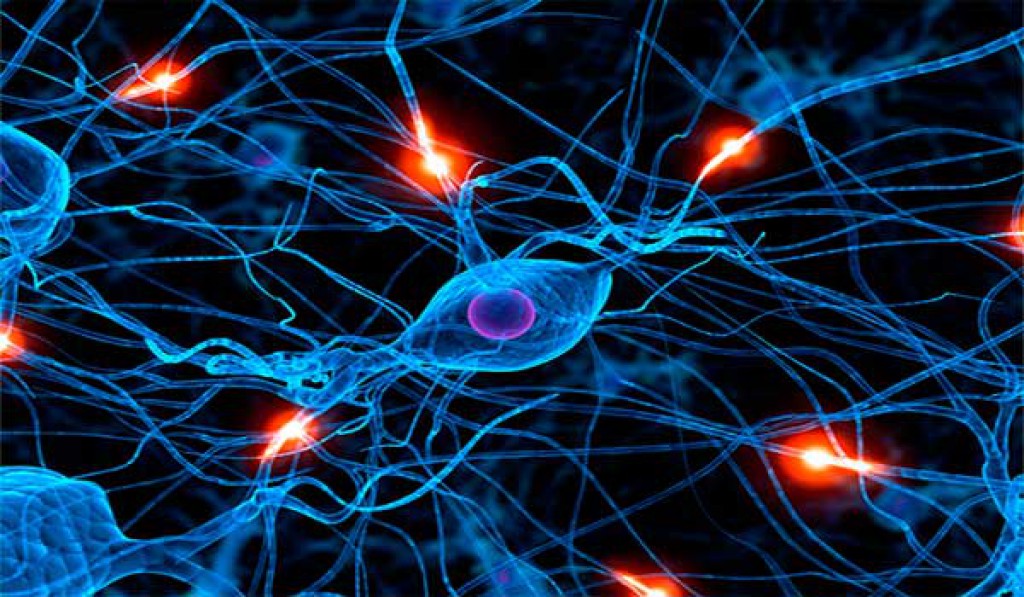
The combination of hunger and exercise not only helps you lose weight more effectively, but also has a number of other benefits for the body, for example, it increases acute oxidative stress. Despite such an alarming name as “stress,” this state is beneficial for the body.
In a state of acute oxidative stress, muscles increase their ability to withstand the chronic oxidative stress they encounter on a daily basis.
In addition, the muscles learn to more fully use the energy supplied to them, perform more work, and resist fatigue more effectively.
In other words, training and fasting combined together protect muscles from aging. Moreover. Combination of fasting and physical activity triggers a process in the body that rejuvenates both the muscles and the brain.
The rejuvenating effect of training on an empty stomach is explained by the fact that against its background, the brain produces brain-derived neurotrophic factor (BDNF), which is necessary for the growth of new neurons.
In muscles, the combination of hunger and exercise stimulates the production of muscle regulatory factors (MRFs), which are necessary for the growth of muscle tissue.
The health benefits of exercising on an empty stomach include:
- turning back biological clock for muscles and brain;
- increasing cognitive abilities;
- treatment and prevention of depression;
- improved physique (more muscle, less fat).
Prevention of serious illnesses
The depletion of glycogen stores that occurs when training on an empty stomach puts the body into “survival mode.” In this state, metabolism switches from burning carbohydrates to burning fats. Energy in the body is not stored, but consumed.
It has been established that the state in which active oxidation occurs fatty acids, is an ideal metabolic condition for the activation of stem cells and tissue regeneration.
The body in this state undergoes a whole set of transformations:
- insulin sensitivity increases;
- the immune response improves;
- chronic inflammation disappears, which leads to a bunch of diseases from obesity to cancer and atherosclerosis.
And, of course, all this is a prerequisite for noticeable weight loss, and due to adipose tissue, and not due to muscles.
What if you can’t train on an empty stomach?
Fasting fitness sessions are indeed not always possible.
Since, firstly, they must be performed early in the morning before breakfast. And if this can be achieved, then only on a day off. Don't eat all day long so you can go to the gym hungry in the evening, don't best way existence.
Secondly, many people, especially untrained ones, are simply physically unable to exercise while hungry. They feel dizzy, nauseous, their heart skips a beat and their legs buckle.
If all this is true, and you physically or for reasons of free time cannot afford to do fitness on an empty stomach, it is very important to know what you can eat so that your workouts are not wasted.
Allowed food before training
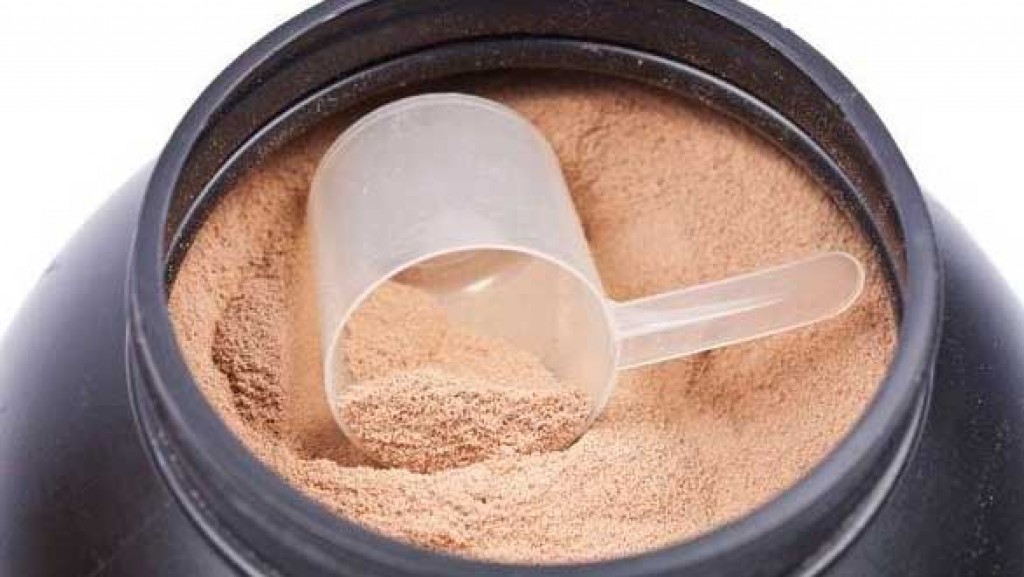
Some nutrients that enter the body before fitness can imitate the process of fasting. That is, a person ate before training, but his body thinks that he is training on an empty stomach.
These nutrients are called stress-activated nutrients. They are produced by living organisms (bacteria, plants, animals) in response to stress, which can be hunger, radiation, heat shock, infections, etc.
Stress-activated food components include:
- phenols;
- caffeine;
- theobromine;
- catechins;
- proteins of the immune system.
Unfortunately, many foods containing stress-activated nutritional compounds that our ancient ancestors consumed are no longer available.
But still today you can find those products that contain stress-activated components. First of all, this:
- cocoa;
Of course, all this is more likely water than food. But these are the stress-activated foods that are available these days.
But don't despair. There is another product that is more nutritious than tea and coffee. This is whey protein. True, it is also usually drunk, not eaten. But its nutritional value is much greater than that of tea.
Why is whey powder the best pre-workout food?
It has been found that if you drink a shake containing 20 grams of whey protein powder 30 minutes before exercise, your post-workout metabolism will be accelerated within 24 hours.
There is nothing fabulous about this fact. Everything is scientifically explainable.
Milk protein whey activates the cellular mechanism mTORC-1, which is responsible for accelerated muscle building. And, in addition, it activates work thyroid gland, which is important for fast metabolism. And it increases the level of testosterone (in both men and women), without which proper metabolism, including in women, is impossible.
What should you not eat before training?
Poor nutrition before fitness is one of the main mistakes that those who exercise make in order to lose weight. As a result, they don’t lose weight. And they are very surprised by this.
The most important thing that you should not eat before training, and what those who lead a “healthy” lifestyle strive to eat, are various natural sweets, for example, fruits or fruit juices.
Why these, as well as many other similar products, are strictly prohibited before fitness, you can read in the article “”.
If we describe the situation in a nutshell, then all carbohydrates, including “healthy fruit” ones, lead to the fact that the body, in principle, loses the ability to burn fat.
1. The most beneficial for weight loss and health in general are fitness classes on an empty stomach (at least 8 hours of abstinence from food).
2. Whey powder is something you can eat before training to burn fat later.
3. Before playing sports to lose weight, it is strictly forbidden to introduce any carbohydrates, including fruits, dried fruits, fruit juices and other “useful things”.
RELATED MATERIALS
What, when and how to eat if you exercise regularly?
Exercising helps us keep fit and feel great throughout the day. for many years. But alone physical activity is not enough to achieve the desired shape and improve health, since the success of training depends 80% on proper nutrition. How to plan your diet so that exercise brings the greatest effect? What foods are suitable for eating before and after training? The answers are in our material!
Pre-workout nutrition: stocking up on energy
Many people prefer to train on an empty stomach, believing that in this case the body will burn more actively. body fat. In fact, everything is a little different. Firstly, without eating, you will quickly get tired and will not be able to perform the exercises as intensely as possible - which means that the workout will not be the most effective. Secondly, when strength training on an empty stomach, there is a risk of triggering catabolism processes, when the body begins to destroy its own muscles, using muscle protein as fuel.
So, 1.5 hours before playing sports, it is important to stock up on energy and prepare the body for active physical work. Foods high in complex carbohydrates are ideal for this, as they smoothly change blood sugar levels and allow for a long time be full and full of energy. These products include:
-
durum wheat pasta;
whole wheat bread;
vegetables and herbs;
non-sugar fruits and berries (grapefruit, apple, pomegranate, orange, gooseberry, cherry, blackberry, blueberry, etc.).
cereals (excluding semolina, white rice, instant oatmeal and other processed grains);
Despite the fact that legumes are rich in complex carbohydrates, they are not recommended before exercise due to their high fiber content. On the one hand, it is very useful for healthy work intestines, but on the other hand, during training it can lead to heaviness and bloating. For the same reason, you should not lean on cabbage before class. The rest of the products can be safely combined, saturating the body with the necessary substances.
Don't forget to also replenish your protein reserves, the main building block for muscle tissue. Before training you need a little of it, so, for example, a white omelette of 2 eggs or a slice of salmon will be enough. The main thing is that your meals do not contain large amounts of fat, because they impair digestion and interfere with the absorption of others. nutrients.
If you were unable to properly eat in advance, 30-40 minutes before training, have a snack containing simple carbohydrates: yogurt and banana, a handful of dried fruits or nuts, fresh fruit. They are absorbed very quickly and give an instant burst of strength, which is enough for the entire workout. However, you should not include chocolate and other sweets in the menu: they contain excessive amounts of fat and do not give useful substances fully absorbed, and also activate the feeling of hunger. In addition, due to their high calorie content, they nullify all your efforts in training: after eating a chocolate bar, in the gym you will spend only those calories that you received with it, and leave your own extra pounds untouched. Great solution There will also be a protein shake that contains proteins and carbohydrates.
Post-workout nutrition: recovery and fat burning
As a result of intense training, our muscles deplete the supply of carbohydrates and proteins. In other words, the so-called “metabolic” or “protein-carbohydrate” window opens.
To replenish the reserves of these substances, protein shakes are ideal - for example, Formula 1 from Herbalife, since the soy protein contained in them is easily digested and goes to the restoration of muscle tissue as quickly as possible. A protein shake should be drunk 10 minutes and no later than an hour after training, prepared with low-fat milk or water.
And the consumption of carbohydrates after exercise depends on your goals: if you are trying to increase muscle mass, then in addition to a protein shake after training, you can eat some carbohydrate foods - for example, a banana, yogurt or some dried fruit. But if your goal is to lose weight or stay in good shape, one protein shake will be enough. This is due to the fact that the lack of carbohydrates - a readily available source of energy - with sufficient protein consumption will force the body to turn to fat reserves for energy, launching the long-awaited process of fat burning.
An hour after training, you should organize another meal that will contain both proteins and complex carbohydrates: for example, lean fish, chicken or veal with vegetables, light cottage cheese or kefir, mushrooms, durum wheat pasta.
It should be borne in mind that after training, it is best to avoid caffeine-containing products - cocoa, chocolate, tea or coffee, as they interfere with the absorption of protein.
Water balance
When exercising, it is important to pay special attention water balance. In an hour of intense training, our body loses 700-800 ml of fluid, and sometimes fresh air or with increased sweating - even more than a liter. The body's water reserves must be replenished in a timely manner, since dehydration leads to vasoconstriction and, at the same time, overloads the heart and prevents the enrichment of tissues with nutrients and oxygen. Try to drink at least 2 liters on the day of training clean water, taking several sips at approximately equal intervals and without waiting for the feeling of thirst.
It turns out that organizing your fitness nutrition correctly is not at all difficult. Balanced diet and adequate water intake will allow you to get the most out of every minute of your workout and achieve your desired shape faster!
If main goal workout - to lose weight, you should pay attention special attention not only the selection of exercises to lose weight and reduce body fat, but also what and when to eat correctly after training. An incorrectly selected diet can negate the most heroic efforts to make a slim figure.
Diet during training
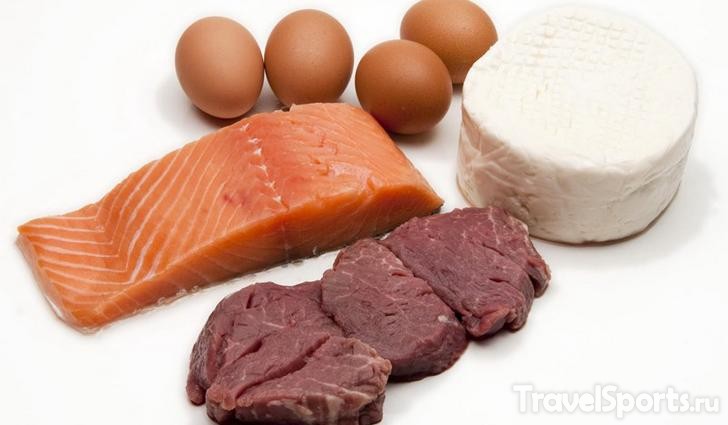
First of all, you need to pay special attention to the balance of proteins, fats and carbohydrates. In addition, regular physical activity requires the supply of vitamins, minerals, and a sufficient amount of clean water.
For ordinary people who do not visit gym, nutritionists recommend making up daily diet in the following proportions: proteins 15%, carbohydrates 60%, fats 25%.
As a rule, most adhere to a different ratio: proteins 10%, carbohydrates 50%, fats 40%, and then lose weight through diets or fitness.
Regular workouts require more protein. Its consumption is necessary for the restoration and growth of muscle mass, which helps burn fat. The optimal proportion is as follows: proteins 30%, carbohydrates 60%, fats 10%.
The minimum portion size depends on the basic amount of energy that the body’s internal metabolic processes require in any case, even if you sit in front of the TV all day.
The formula for calculating your basic calorie count is simple:
(weight in kg: 0.45) x 12.5.
Thus, with a body weight of 70 kg, the body requires (70: 0.45) x 12.5 = 1944 kcal even just to watch TV shows for days.
Regular physical exercise requires an increase in the daily diet before or after exercise by 500 or 1000 kcal.
Protein products for weight loss
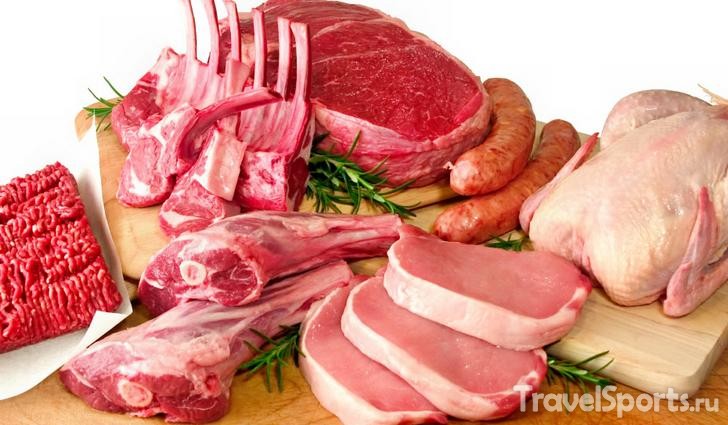
The nutrients contained in foods provide the body with energy as well as raw materials for creating tissue.
Proteins are able to supply the body with energy after the production of glycogen and fat reserves. But in normal conditions after the breakdown of proteins formed amino acids serve building material for new cells, especially muscles, its contractions during regular training help to lose weight.
But physical exercise deforms muscle cells. Therefore, before and after training, for muscle growth - as well as for its repair and recovery - it is necessary to eat the optimal amount of protein.
Protein comes from meat and plant foods. Plants, which are typically rich in carbohydrates, have less protein than animal products. In addition, only animal protein contains essential amino acids that are not produced by the body.
- The most animal protein is found in meat, poultry, fish, cheese, and shrimp. Sufficient amount in eggs, cottage cheese, dairy products.
- There is a lot of vegetable protein in nuts, beans, lentils, and soy. Less - in bran bread, pasta, brown rice.
During intense fitness classes, it is enough to consume protein at the rate of 1-2 g per kilogram of body weight.
In one meal of protein food before or after training, no more than 30 g of protein is absorbed. When there is an excess of it, it begins to swell, food rots, and the liver and kidneys work overload.
On the other hand, lack of protein slows down muscle growth.
Having calculated the daily calorie intake, taking into account body weight, the recommended 30% proportion of protein and the fact that no more than 30 g of protein is absorbed at one time, many come to the conclusion that it is necessary to eat 5-6 times a day.
For example, with a daily diet of 3000 kcal of protein food, you need
3000kcal x 30% = 900kcal.
100g of beef contains 218kcal and 18.6g of protein.
In turn, 412 g of beef contains (412 g/100) x 18.6 = 77 g of protein, which, with a weight of 70 kg, corresponds to the recommended calculation of its consumption of 1-2 g per kilogram of body weight.
Since no more than 30g of protein is absorbed in one meal, which corresponds to 160g of beef - and before or after training you need to eat something else, not just protein - in order to lose weight, you have to eat more often.
What carbohydrates help you lose weight
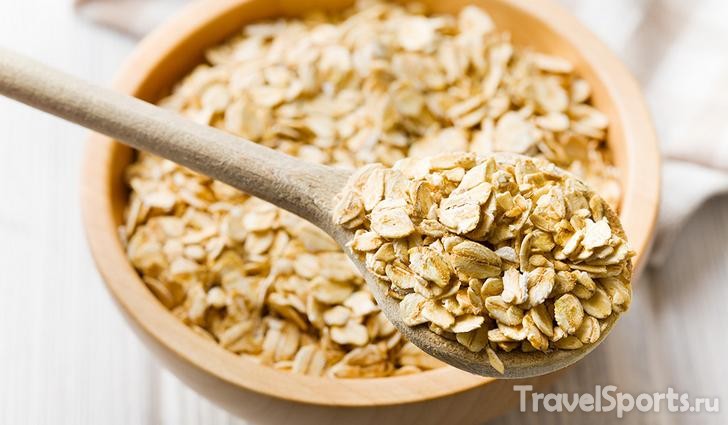
Carbohydrates in the form glycogen accumulate in the liver and muscles. With significant physical activity, intellectual and nervous activity glycogen is converted into glucose and ends up in the blood.
Post-meal hormone insulin produced by the pancreas, transports glucose into the cells, and its excess is sent to the liver and muscles for replenishment energy reserves body. If your blood sugar is still high, insulin turns the excess calories into fat.
There are high and low carbohydrates glycemic index. This indicator characterizes the rate at which carbohydrate-containing foods, before or after exercise, will enter the bloodstream, increasing sugar levels.
Under normal conditions, in order to lose weight and at the same time not overload the pancreas, as well as to ensure an even flow of glucose into the blood, you should choose foods with a low glycemic index (below 50).
Thus, fried potatoes or mashed potatoes, honey, white bread, chocolate, biscuits, rice, bananas, jam, preserves, you should prefer peas, oatmeal, buckwheat porridge, pasta, beans, lentils, fresh fruits, vegetables.
Which fats to choose to lose weight
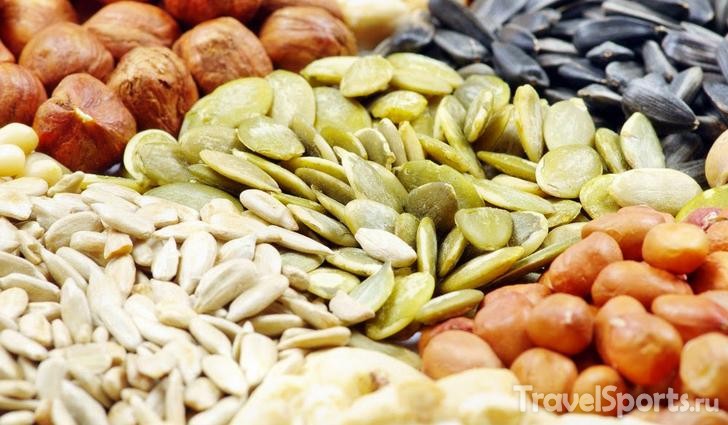
Fat reserves supply the body with energy. Subcutaneous fat helps retain heat and protects internal organs from concussions.
To burn fat, it must first be broken down into free fatty acids, giving the body energy. During exercise, glycogen is used up first. And only then fat reserves, which is facilitated by prolonged aerobic training that develops endurance.
For losing weight and maintaining health, the most useful vegetable fats are nuts and seeds. Fatty foods Animal origin contains a lot of cholesterol, which is harmful to the heart and blood vessels.
Proper nutrition before training

Post-meal blood supply digestive system increases. On the other hand, muscular efforts during fitness also require increased blood flow.
If you eat and start exercising, the body will be forced to redirect blood from the digestive system to the muscles, causing food digestion to slow down, heaviness and discomfort to appear in the stomach, and nausea or vomiting to begin.
Therefore, you should not perform any physical exercise for one and a half to two hours after a heavy meal.
But the reality is that it is not always possible to have time to eat within the recommended time interval before training. On the other hand, you should not exercise on an empty stomach due to the risk of fainting.
Therefore, in order to lose weight and at the same time give the body the necessary energy for full muscle contractions that burn calories, before training you should eat silent carbohydrates with a high glycemic index - banana, chocolate, dried fruits. They do not cause heaviness in the stomach and at the same time due to small amount do not have time to be deposited as fat.
How and what to eat after training
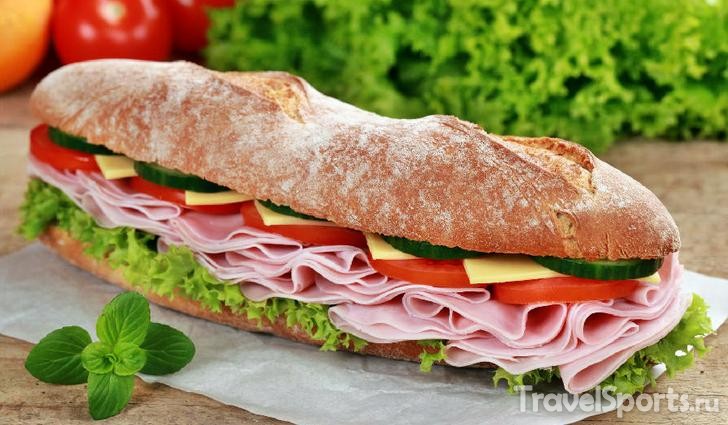
Post-workout nutrition has its own characteristics. Muscle contractions distort cells, causing fatigue and making it difficult for muscles to function optimally. In addition, sports movements use up glycogen.
So that the activity gives maximum benefit In order to quickly restore muscle cells and glycogen reserves, no later than 45 minutes after training you should eat carbohydrates with a high glycemic index, as well as protein foods (yogurt, milk, boiled chicken egg) based on four parts carbohydrates and one part protein.
It is during this time period, called protein-carbohydrate window, the muscles become susceptible to insulin, under the influence of which glucose and amino acids obtained as a result of the breakdown of protein products appear in the overworked muscles.
If you eat after a workout later than 45 minutes, the protein-carbohydrate window will close and the muscles will stop accepting insulin, which will significantly slow down their recovery processes, as well as the body’s weight loss.
Don't go to the extreme and eat heavily after a workout while muscle cells are sensitive to insulin. First of all, because the body requires not only energy to digest large and dense foods, but also time, after which the protein-carbohydrate window will have time to close.
After training, you should choose easily digestible foods - carbohydrates with a high glycemic index, as well as quality protein. They will be quickly absorbed and at the same time give the muscles the opportunity to restore cells and energy reserves. You can really eat in an hour and a half.
Not large number Protein food is necessary not only after training, but also in the evening. This diet increases the rate of muscle growth, which occurs in the first two hours of sleep, when growth hormones are most active.
Nutrition after fitness for weight loss

It's no secret that while gaining muscle mass, fat accumulates at the same time. When correct organized meals before and after training, three parts muscle to one part fat. Optimal weight loss burns three parts fat and one part muscle.
In the absence of training and with poor nutrition, weight is reduced by a significant decrease in muscle volume, not fat deposits.
This often happens with low-calorie diets, when the body, in search of the necessary energy, takes on muscle mass, using it as an easier food to break down compared to fats. As a result, weight decreases, but fat remains.
Therefore, in order to lose weight, it is necessary to organize training and nutrition in such a way as to maintain a sufficient amount of muscle in the body, which stimulates metabolic processes and requires significant energy to overcome stress during fitness.
Excess fat, on the contrary, slows down metabolism, causing even more fat deposits to accumulate in the body.
To lose weight, you should eat before and after training in the same way as when building muscle, but reducing the energy value of your daily diet by 500-1000 kcal.
It is better to prefer baked or steamed food to fried food, since boiling and stewing destroy a lot of the healthy content in the food. To reduce body weight, you should include fresh fruits and vegetables in your diet.
Eating small meals frequently helps you lose weight, since with a traditional three-times-a-day diet, the calorie content of the portions turns out to be too high, causing excess calories to be stored in fat.
How to exercise properly to lose weight

Dietary restrictions using diets in the absence regular workout muscles make it difficult to get rid of fat deposits. In addition, as you age, it is more difficult for your body to break down fat.
If you stop exercising the muscles that help burn fat deposits, the body begins to use unnecessary muscle mass to obtain energy - even during sedentary work.
To start the process of converting fats into free fatty acids - a source of energy - it is necessary to saturate the blood with oxygen. Long-term aerobic exercise solves this problem. In addition, it allows you to get rid of accumulated fat without significantly reducing muscle mass.
The simplest and most accessible way to lose weight and at the same time not worry about proper nutrition after training is regular hour-long walks in the morning and evening. It turns out that prolonged movements at low intensity activate enzymes(enzymes) that break down fat, and this process continues for another 12 hours after a 60-minute walk.
In a more serious approach, aerobic exercise is determined by both duration and maximum heart rate (HR):
maximum heart rate = 220 – age
Thus, for forty-year-olds, the maximum heart rate is 220-40 = 180 beats per minute.
To burn fat, the optimal aerobic activity (running, cardio) should be 50-80% of the maximum heart rate, which in the case of a forty-year-old is 90-140 beats per minute.
The blood is saturated with oxygen after about 20 minutes of exercise, after which the processes of fat breakdown are activated. Nevertheless, muscles receive nutrition from glycogen, the share of energy from free fatty acids is insignificant. Therefore, in order to lose weight, it is worth increasing the duration of each endurance exercise to 40-50 minutes.
A day is enough to recover after aerobic training, so you can do it every day. In any case, the break should not exceed two days. For beginners, it is optimal to train every other day with a load of 60% of your maximum heart rate.
Immediately after training, you need to eat food within 20-30 minutes. Post-workout nutrition plays a role important role in restoring strength and energy. You can drink a protein shake and eat fast or slow carbohydrates; now simple carbohydrates are allowed. It is advisable to give up fats after sports loads in the next hour.
IN this period the protein-carbohydrate window opens and it is important to enrich the body with reserves of nutrients, vitamins, proteins and carbohydrates in sufficient quantities so that anabolic processes in the body function correctly for active growth muscles.
The role of carbohydrates after exercise
Carbohydrates provide the body with energy. During the period after training, a deficit of carbohydrate reserves forms in the body and muscle tissue begins to break down under the influence of catabolic processes. It is advisable to eat fast carbohydrates. Insulin levels need to be raised to normal course anabolic and anti-catabolic processes.
Depending on the intensity of your activities and weight, the norm is 60-100 carbohydrates.
Foods containing carbohydrates
- Buckwheat
- Pearl barley
- Oatmeal
- Durum pasta
- Bread, bran
- Bananas
- Fresh juice
- Honey (small amount)
The role of protein after exercise
A protein shake is best for muscle recovery after exercise. Add to your post-workout meal food supplement BCAA 5-10 grams. BCAA contains 3 essential amino acids that are very beneficial for muscle fibers. Protein synthesis in muscles increases 3 times if you consume protein foods for the first time 20-30 minutes after the gym.
Foods containing proteins
- Chicken fillet
- Turkey fillet
- Egg whites (boiled or scrambled)
- Seafood
- Cottage cheese 0.5% fat
- Lean meat
- Protein dishes
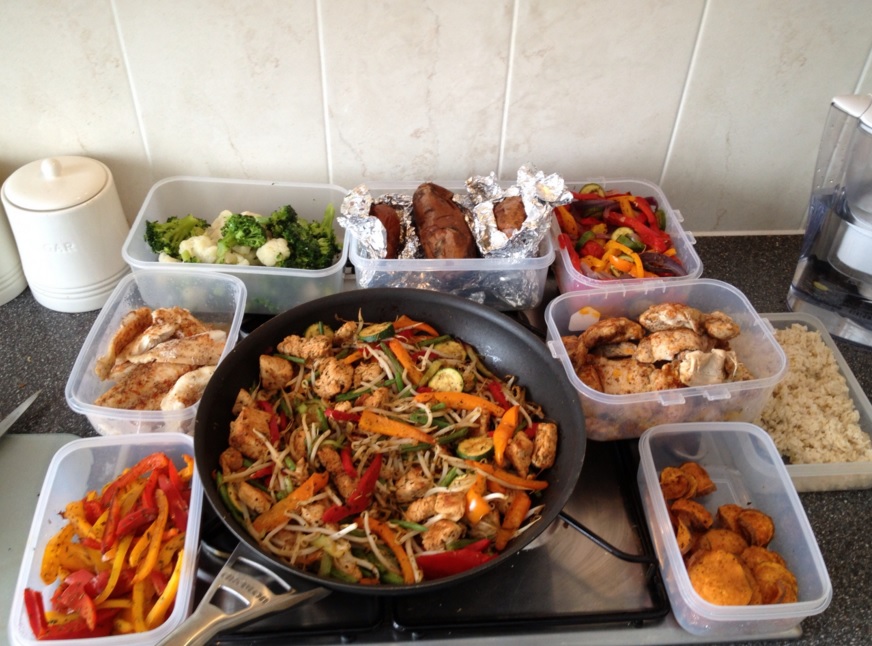
Post-workout menu options
- Buckwheat with fish, salad with herbs and green tea.
- Rice with chicken fillet, cucumber, tomato, onion, compote.
- Barley porridge with lean meat, radishes, carrots, vegetable or fruit juice.
- Pilaf, fresh vegetables, jelly.
- Durum pasta with chicken, 1 apple, green tea with lemon.
- Cottage cheese 0.5% with sour cream 5%, oatmeal cookies with milk 0.5% fat.
Immediately after all physical exercise:
- Creatine – for him best time for absorption - after the gym. The norm is 3 grams to restore all processes.
- Water – up to 900 ml to restore balance in the body.
- BCAA (BCAA) - approximately 3-10 grams to protect muscles from destruction (catabolism) and enhance the anabolic process.
- Glutamine – approximately 3-5 grams, is involved in the synthesis of muscle proteins, a source of energy, strengthens the immune system, and helps recover after physical activity.
In 20-30 minutes (we will secure the information)
- Carbohydrates – 50-90 grams, preferably complex ones.
- Proteins – 20-30 grams, animal origin or protein shakes.
Additional tips:
- Sleep - take a 1 hour nap after the gym, only to benefit the recovery processes in the body.
- At the end of the main workout, do a cool-down to calm your body.
- Massage – improves muscle tone and blood circulation, improves mood.

Recovery after exercise
Recovery plays an important role in the growth of muscle fibers. You need to rest for 24-48 hours after another workout. If you neglect this time and go to work out earlier, this will lead to the destruction of muscle fibers, because they will not have time to fully recover. If you want quality muscles, then rest well.
- Take a cool bath. Scientists have concluded that a cool bath and contrast shower After physical activity, muscle pain is reduced and the body recovers better. Blood vessels due to the temperature difference, they contract and expand, while the waste in the tissues is washed out.
- Avoid overtraining. Constant overload in the gym or in any other training sometimes leads to injuries and weak result. This is because the muscles do not have time to recover and cannot progress. Do it once every 2 months for a week with -50% loads. This will allow the body to rest and recuperate properly. If you are over 25 years old and you are not going to sacrifice your health for the sake of medals, then train at 80-90% of your maximum. After all, our body is like the engine of a car, if it is constantly overloaded, then sooner or later it will “overheat” and break down. Therefore, train for many years and do not push a little, this way you will maintain the health of your bones, joints and the body as a whole.
3 day program for muscle growth
When developing a training plan, it is necessary to divide muscle groups into different days and you don’t need to train the same muscle group 2 times a week. 1 day is enough for good, severe, strength training.
An approximate training system for muscle growth and maintaining shape, 3 times a week.
- 1 day – pectoral muscles, cardio exercise (exercise bike).
- Day 2 – back, biceps, legs, abs, cardio exercises (exercise bike).
- Day 3 – shoulders, triceps, cardio exercises (exercise bike).
Perform 2-3 exercises for each muscle group and 3-4 sets of 8-12 repetitions. Rest between sets for 2-5 minutes, depending on the intensity of the workout and your goals.
Take care of your health, eat well after training, and your physical fitness it will be great.
Zozhnik presents recommendations from the most authoritative sports organizations in the world regarding optimizing nutrition after training: when, what and in what quantities to eat and drink in order to recover after training as quickly as possible.
It is worth noting that this material has nothing to do with the so-called anabolic window, but is only a summary of recommendations for optimizing the recovery process from the world's leading organizations. The existence of an anabolic window is very doubtful, and our upcoming book devotes an entire chapter to this issue.
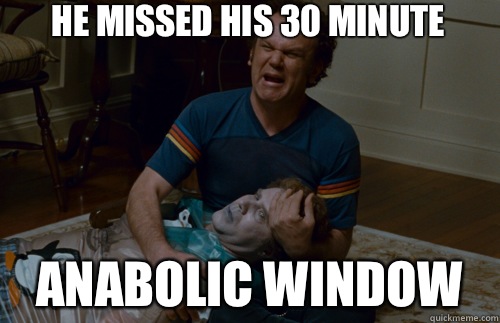
Research data that examines how dietary timing influences recovery and adaptation to training allows optimization of recovery processes and helps athletes achieve maximum results. At the same time, there are no universal recommendations for everyone, because what and in what quantity to eat in general and specifically after training depends on factors such as the type of sport, frequency and intensity of training, food consumption before and/or during training, body composition, goal person, conditions external environment and so on.
Before we get into specific nutrient intake recommendations (protein, fat, and carbohydrates) post-workout, it is important to emphasize that in order to achieve your goals, you must first consume adequate total amounts of protein, fat, and carbohydrates per day. After all, for example, if you consume the recommended amount of carbohydrates immediately after training, but do not get the total daily amount of this nutrient adequate to your activity level and goals, your efforts will not pay dividends.
Table of daily carbohydrate needs
![]()
As you can see from the table, the American College of Sports Medicine (ACSM) provides general recommendations for athletes, while the International Society of Sports Nutrition (ISSN) gives more specific figures for the amount of carbohydrate intake - depending on the frequency, duration and intensity of training. However, the International Olympic Committee (IOC) provides even more specific figures, distinguishing carbohydrate needs depending on the type of training.
Daily protein requirements
The ACSM recommends consuming 1.2-1.4 g of protein per kg of body weight for endurance trainees and 1.6-1.7 g of protein for resistance trainers. At the same time, sports organizations such as ISSN and NASM (National Academy of Sports Medicine) recommend consuming more protein for physical performance. active people– up to 2 grams per 1 kg of weight. We remind you that 3-4 fitness workouts per week is an average level of activity, which means you need to eat no more than 1.7 g of protein per kg of body weight.
Carbohydrate intake after exercise
For maximum quick recovery glycogen reserves ACSM, ISSN and IOM recommend consuming 1-1.5 g of carbohydrates per 1 kg of athlete’s body weight in the first 30 minutes after training. However, if 24-48 hours pass between training or sporting events, the carbohydrate timing strategy is not so important. After all, if within 24 hours a person has consumed the daily amount of carbohydrates adequate to his goals and activity level, glycogen reserves will be restored even without urgent consumption of carbohydrates immediately after training.
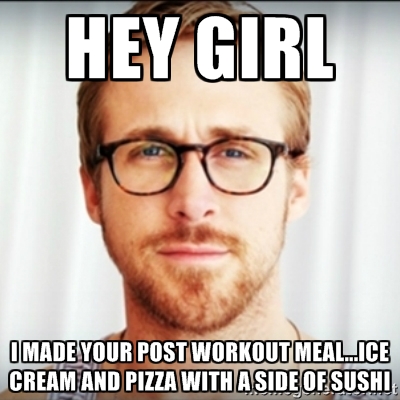
The fastest restoration of muscle glycogen stores is very important if a person exercises or takes part in sporting events less than 8 hours apart. For example, an athlete who trains twice a day. IN in this case To quickly restore energy reserves, the ACSM, ISSN and IOC recommend consuming a portion of carbohydrates in the first 30 minutes after exercise, and every 2 hours for a 4-6 hour period, as indicated in the table below.
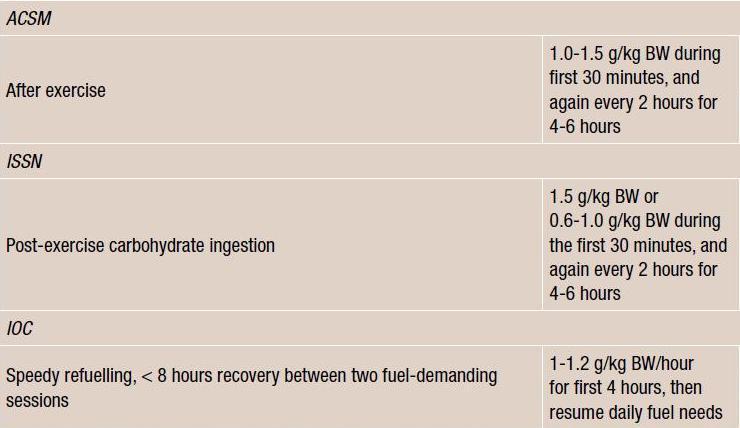
Certified nutritionist Marie Spano notes that for speedy recovery In order to maintain glycogen reserves, immediately after training it is necessary to consume carbohydrates with a high glycemic index (for example, juice, baked goods).
In the manual for sports nutrition NSCA notes that both liquid and solid form carbohydrates gives an identical result in terms of glycogen restoration. However, after training it is not recommended to consume large amounts of fructose, since this type of carbohydrate is associated with more low level restoration of glycogen in muscles compared to other sources of “simple” carbohydrates.
Protein intake after exercise
Experts from the ACSM, ISSN, and IOM agree that consuming approximately 20 grams of protein along with carbohydrates within the first 30 minutes after exercise optimizes recovery. It is noted that the use sports supplements in this case is not justified, because these nutrient needs can be satisfied without problems through the consumption of regular food.
To optimize recovery after training, the International Society of Sports Nutrition recommends adding a serving of protein to carbohydrates at a rate of 0.2-0.5 g/kg body weight.
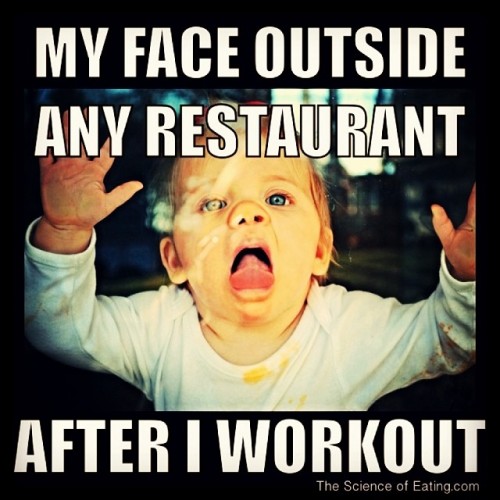
Experts from the International Olympic Committee recommend consuming 20-25 g of protein immediately after training. The preferred post-workout form of protein for IOM is low-fat milk. Experts from the NSCA note that after training it is necessary to give preference to dairy products, as well as eggs.
The NSCA Sports Nutrition Guidelines also indicate that increased glycogen resynthesis (as well as protein synthesis) occurs as a result of co-consuming protein with carbohydrates. It is noted that the total amount of carbohydrates consumed is the main factor that contributes to the restoration of glycogen.
Restoration of water and electrolyte balance
Replenishing fluids and electrolytes is one of the most important tasks after training. The ACSM's position on fluid replenishment states that regular food intake with added salt plus a serving of water will be sufficient to replace fluid and salt losses. Consuming a small amount of salt will help retain fluid in the body and stimulate the feeling of thirst.
It is noted that, unlike water loss, salt loss during exercise is very difficult to assess. Moreover, it has been found that people lose different amounts of salt through sweat. Drinking sodium-containing sports drinks may be an option, although a regular salty meal you eat post-workout will easily replenish sodium loss.
One of the simplest ways to assess fluid loss during exercise is to weigh yourself before and after your training session. If a person needs to replenish fluid loss as quickly as possible and return his hydration status to normal, then within 4-6 hours after training he should drink approximately 1.5 liters of fluid for each kilogram of weight lost during the workout.
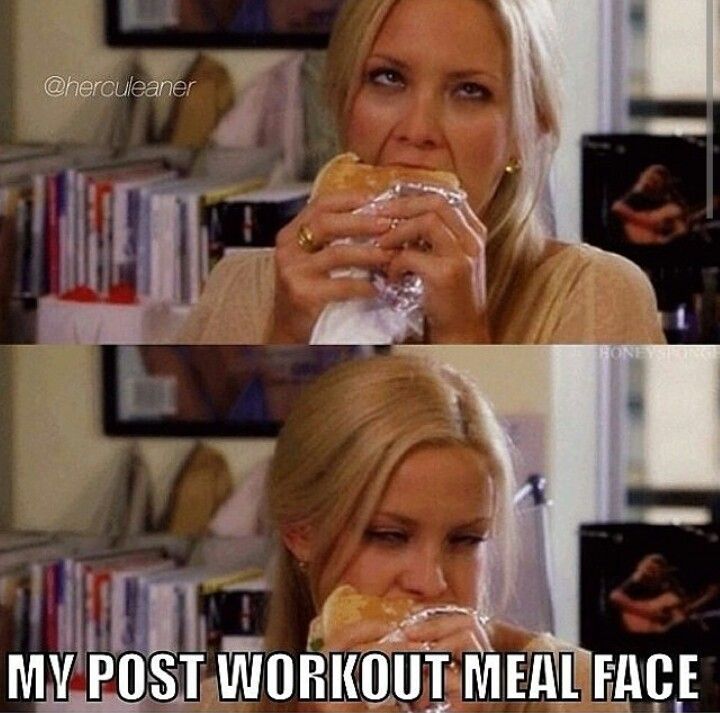
Experts from the NSCA note that evidence of a sufficient level of hydration is a copious amount of urine (urine) that is pale yellow in color. It should be borne in mind that if you take multivitamins, B vitamins, or eat beets, carrots or oranges, your urine will be darker, more saturated in color.














